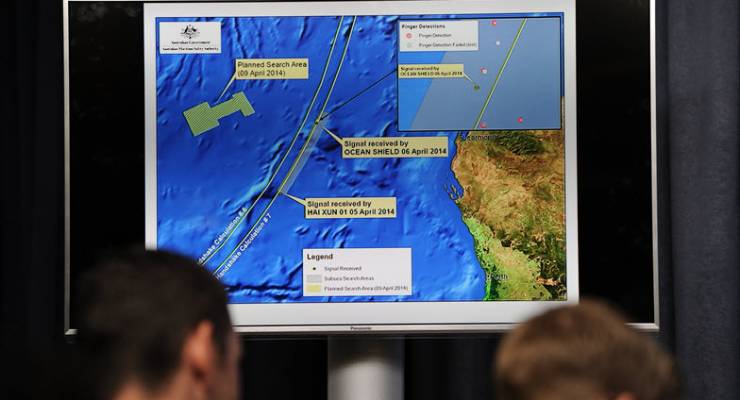
Pressure is being applied to the Turnbull government to reopen the search for missing flight MH370 on two fronts, just as it seems all but paralysed by the political and constitutional crisis caused by Australian parliamentarians holding dual nationalities.
Whether these campaigns to resume looking for the Malaysia Airlines 777-200 ER — which disappeared while on its way from Kuala Lumpur to Beijing on March 8, 2014, with 239 people on board — are successful may well be determined by their perceived value as “circuit breakers” from the risks to the survival of this Coalition government.
The Australian Transport Safety Board (ATSB) provides the time poor with this succinct notification of the progress made by Geoscience Australia in interpreting images of debris in the south Indian Ocean by a French military satellite on March 23, 2014, as well as a separate report by the CSIRO refining drift analysis it has carried out on debris from the jet recovered from westerly locations in that ocean.
In this latest notification ATSB Chief Commissioner Greg Hood tactfully hoses down the blunter claims made in some media reports that the CSIRO has identified a precise location for the wreckage. A position his Minister for Infrastructure, Darren Chester, has declined to endorse because it doesn’t guarantee that it identifies the location of the sunk wreckage with sufficient precision.
In fact, the CSIRO analysis that first identified a new search prospect was published with implicit and unambiguous ATSB encouragement just before Christmas last year.
It was also rapidly rejected as a new search imperative by Chester the same day, and has led to extensive discussion on Plane Talking (all of which can be accessed here).
Coming over the top of these latest refinements (and the long sought release of more information from the French military satellite) is the offer by an American oceanographic exploration firm, Ocean Infinity, to launch a radically faster seabed search for an undisclosed fee to be paid only if it succeeds in finding the wreckage.
There has been no coherent nor official Yes/No response to this offer of a “free” resumption of searching from either the Australian or Malaysian authorities.
Ocean Infinity has put both countries on the spot, something that might not elicit the co-operation of the administrative branches that advise governments in both countries, and it is the Malaysians who actually make the calls when it comes to what the ATSB-managed search for MH370 actually does.
Public service culture is strongly media pressure resistant, and as the principal sources of information and advice to governments, they tend to double down on errors of judgment, in the interests of face saving, sometimes with undesirable policy outcomes.
While it is true that none of the French-identified potential objects were identified or examined by the original Australian Maritime Safety Authority search, or the later aerial and sea surface activities of the ATSB-managed searches, it has long been argued that the ATSB was, in hindsight, too hasty in shifting its efforts to the north-east of the zone near where the satellite images were made.
This has been a controversial talking point since late March 2014, and it will continue to be until more definitive findings are made.
*This article was originally published at Crikey blog Plane Talking








Could it be that the plane went north?
Might find it and if not they will get get a more extensive ocean floor survey; certainly more worthwhile use of money then the plebiscite.
Can’t help feeling that the mineral exploration industries lurve all this free sea floor mapping.